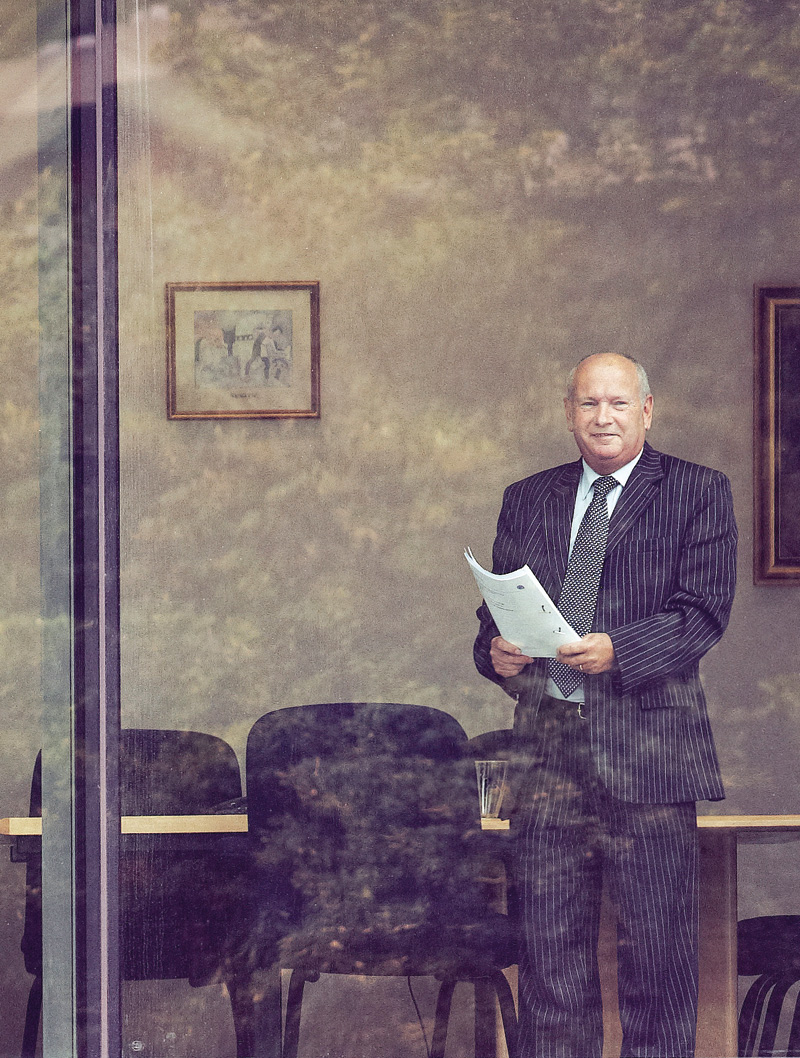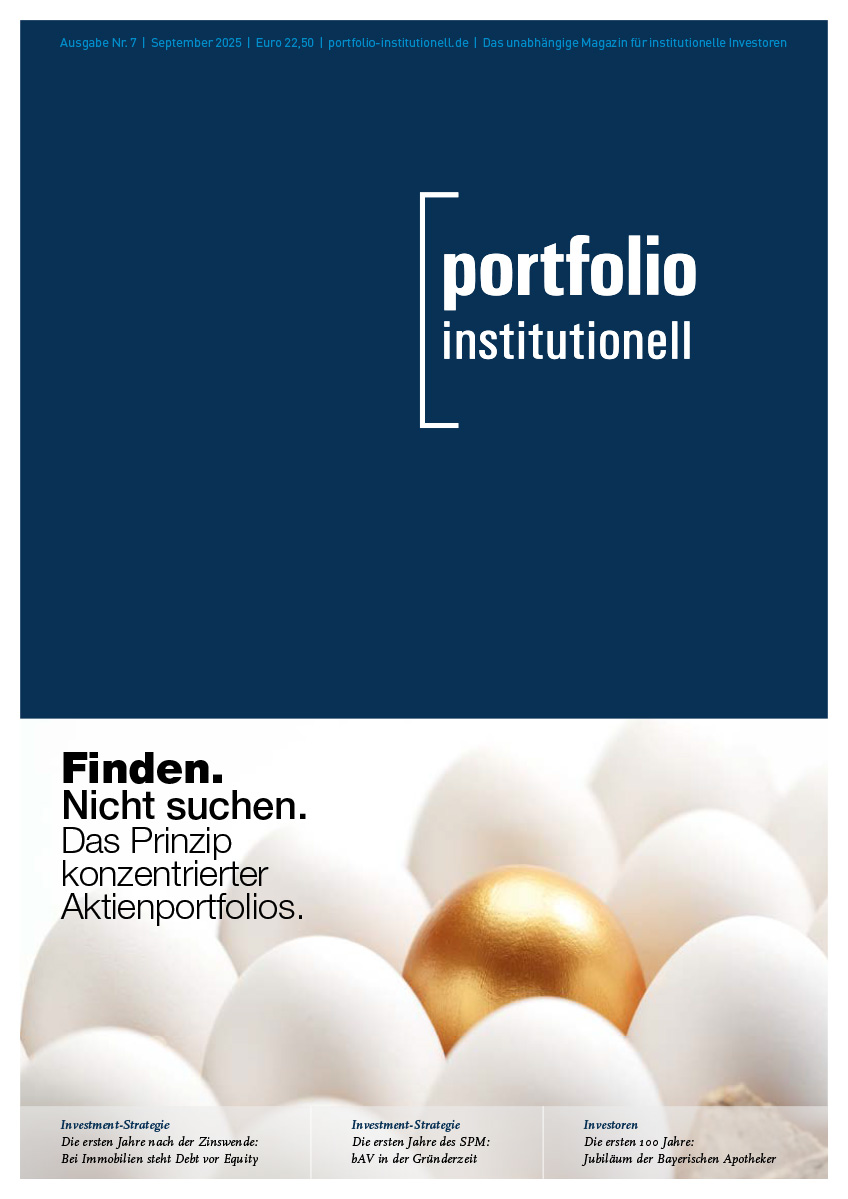Signed, sealed and delivered: Royal Mail Pensions Trustees chief executive Gerry Degaute
It is an extraordinarily interesting time for the Royal Mail pension scheme. At midnight on 31 March this year, as part of one of the largest projects ever to happen in pensions, Royal Mail transferred the majority of the Royal Mail Pension Plan’s (RMPP) assets (around £28.5bn) to the Government’s balance sheet as part of the Postal Services Bill.
The ‚pensions solution‘ as it has come to be known meant that literally overnight the fund went from having some £31bn in assets under management, a whopping £8.4bn deficit and 431,622 members to a £2.5bn fund and with a fully-funded status and around 130,000 members. Benefi ts for pensioners, dependants and deferred members earned up until that point are now provided by a new Royal Mail Statutory Pension Scheme (RMSPS) – an unfunded scheme run solely by the Government.
Meanwhile, the smaller, leaner RMPP remains in the hands of two sponsors: the Royal Mail Group and Post Office Limited (POL) and receives around £500m in contributions a year. Royal Mail Pensions Trustees chief executive Gerry Degaute tells portfolio institutional why the pensions solution was necessary and how it has affected the fund’s investment strategy.
Why was the pensions solution needed?
There was no crown guarantee on this fund so the situation we were in was really quite unique. It came out of a public sector background but it was treated as a private sector fund and was the largest in the country in terms of membership with more or less £30bn under management.
Our plan sponsor was a company in a declining sector and with pension liabilities as of 31 March 2010 of £34.4bn, so something had to happen to address this.
In 2008 the Government set up a review of the postal services industry which said it needed to take over the liabilities of the fund. We, the trustees, worked with the company and the shareholder executive of the Department for Business Innovation and Skills and managed to get four things written into the Act: that no member was any worse off than they would have been had the solution not have happened; that members had the same protection under the new scheme as under the existing scheme; that the future scheme was fully funded with no defi cit; and that the member had a seamless experience so that the admin would continue through the same process as before.
On 31 March this year we pressed the button. The assets were around £31bn and we need to keep back something in the order of £2.5bn so we are in the process of transferring over, in round numbers, about £28.5bn.
How involved were you as the trustees in the transition management process?
We stepped aside and it was all done by the Government. They kept us informed about what was happening, but it was their business. We were very happy because we had the liabilities covered by virtue of us passing the liabilities to the Government.
How did the fund control risk before the pensions solution?
As at March 31, 2011 there was 23.9% in a return-seeking overlay which was in futures and a liability-hedging overlay of 19.6% which was in swaps. Since about 2006 we had been de-risking, initially mainly through swaps as they were better priced than linkers. But swaps became more expensive and to buy linkers you need cash so we sold out of physical equity which threw up cash and we took out futures. So up until March 2011 we were buying linkers when we felt the prices were adequate. We use two types of derivatives to de-risk and a return-seeking overlay is not an obvious way of doing it; the obvious way is swaps and linkers but we needed to keep up the risk profile of the fund because the defi cit recovery programme which was over 38 years assumed a reasonable degree of investment return. It was probably the longest recovery period any large fund has had, so from a trustee perspective it was a pretty worrying situation, but also from a business case and shareholder perspective because the business was shrinking and the defi cit rising.
How has the pensions solution changed the fund’s investment strategy?
The funding objective has not changed. All that has changed is moving to fully funded overnight. The objective has always been to have enough assets to meet liabilities as they fall due. If you can be sure members‘ pensions are paid in the future you don’t want to lose that. We have a valuation coming as at 31 March 2012 so we will review the investment strategy then. We are accruing in excess of £500m a year but at this point because the solution has just happened we are in the process of looking at funding and investment for this new plan. We are engaging with the company to agree funding and consulting them on investment so at this point things aren’t formulated. The key element which is unknown at the moment and will be crucial in formulating the investment strategy will be the covenant of the fund sponsor. At the moment it is still 100% owned by the government but we know that the strategy from a business perspective is to introduce some private capital, although we don’t know when. When that happens it will have an enormous impact on how the covenant is assessed which will then inform the funding strategy and investment policy. As of 1 April we have two plan sponsors because POL is remaining 100% in government ownership and there is Royal Mail, the letters and parcels business. POL, which is roughly 7% of the fund, is going to remain in the public sector so the covenant is going to look very diff erent to the covenant of Royal Mail Group. So we are talking about two covenant assessments and two funding agreements and therefore potentially two lots of investment strategy.
Are there any asset classes you are looking at?
Having more than £500m per annum of cashfl ow means we will be large investors in the market again and we will look to further diversify our return seeking assets. The process at the moment is to invest broadly in line with the old numbers and look at other areas within the return-seeking space. At this stage the only one we want to talk about is private debt. It will be through either direct funds or fund of funds. The book I guess looks like a book of credit but in the private space – private debt is to credit what private equity is to listed equity. We believe it is a good spend of our risk budget. We will look at infrastructure, but our one issue about the joint initiative [involving the National Association of Pension Funds and the Pension Protection Fund] is the lot size. When we were £30bn, making an investment of £100m was less than 1% of the fund but now at £3bn – once we have the new cashfl ow on the books – a cheque for £100m is quite a slug. We will have a look at that but it is too early to say if we will do it or not. What we haven’t had in the past is hedge funds. We looked and didn’t like it because it was opaque, the fees were extremely high and the numbers weren’t proven, but we are going to go back and have a look.
How much of the portfolio is return seeking and how much liability matching?
We have been able to keep back some of the assets of a liability-hedging nature which will hedge out the new liability as it comes on the books, even though it is only for quite a small period. We have as much in LDI as we want right now which compared to what we had in the past is less by a long way because we don’t have much past service liability – it is just new liability going on the books. Our liability hedging is either swaps or linkers because they are the assets, ignoring mortality risk, that hedge the real yield for you and all the rest is return seeking.
Looking at some of the things coming out such as brownfield infrastructure, if that can behave like the liabilities it could find a place in an LDI programme, but it would have to be proven fi rst and whether it is attractive will depend on pricing because swaps and linkers are still expensive. If it is in the return-seeking space it has to have a return profi le that is going to add value. It would diversify but the amounts one would allocate to it point more to returns as opposed to diversifi cation benefit.
How important is governance and stewardship to the Royal Mail fund?
It is very important to the trustee. We signed up to the Financial Reporting Council’s UK Stewardship Code and the United Nations Principles for Responsible Investment so it is on our agenda. Each manager that comes through the door has to include in their presentation to us the things they do in these areas. If we really like them and they haven’t signed up I don’t think that would cause us not to appoint them but we would talk to them about why not and would want to understand the reasons. We ask that our managers are entirely up to speed and we have our expectation of what they should be doing which is mainly engaging. In particular, the additional voluntary contributions and the defi ned contribution scheme are invested in a lot of passive funds and in those areas Legal & General Investment Management is the manager. We go through their reports very closely and by and large they are doing a good job in the governance area.



Schreiben Sie einen Kommentar